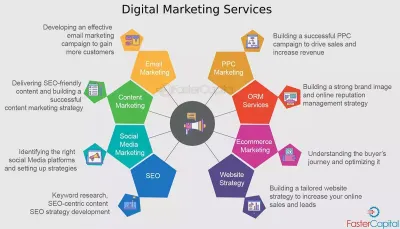The Adobe Stock Contributor Program allows artists and designers to sell their vector graphics on Adobe Stock. It provides a platform for creatives to showcase their work, reach a global audience, and earn royalties. By contributing to Adobe Stock, you can turn your passion for design into a source of income while helping others find high-quality graphics for their projects.
What is the Adobe Stock Contributor Program

The Adobe Stock Contributor Program is an initiative by Adobe that offers a marketplace for creators to sell their digital assets, including vector graphics. It connects contributors with buyers who need high-quality images, videos, and templates. Contributors can upload their work to Adobe Stock, where it becomes available for licensing by users worldwide. The program is designed to empower artists by providing them with a sophisticated platform to monetize their creations, ensuring they retain rights to their work while benefiting from Adobe’s extensive customer base.
Benefits of Joining the Adobe Stock Contributor Program

Joining the Adobe Stock Contributor Program offers several advantages for graphic designers and illustrators:
- Revenue Potential: Contributors earn a commission each time their vector graphics are downloaded, offering a steady stream of income based on the popularity of their designs.
- Global Reach: Adobe Stock is widely recognized, providing contributors with access to a large, international audience of buyers seeking quality graphics.
- User-Friendly Platform: The Adobe Stock interface is intuitive, making it easy to upload and manage submissions, track sales, and adjust pricing.
- Creative Freedom: Artists retain the rights to their work and can continue to sell their vectors elsewhere, allowing for creative independence.
- Marketing Support: Adobe leverages its brand to market stock content, increasing exposure for contributors’ work without additional effort on their part.
Understanding the Submission Process for Vectors

So, you’re ready to share your amazing vector graphics with the world through the Adobe Stock Contributor Program—awesome! Understanding the submission process is key to getting your work noticed and approved. Here’s a straightforward breakdown to guide you through:
1. Create Your Adobe Stock Account: If you haven’t yet, signing up is your first step. Make sure you fill out all necessary information accurately; this will help potential buyers find you later.
2. Prepare Your Vectors: Before submitting, optimize your vectors. Check for:
- Low complexity to ensure quick loading times.
- Correct color profiles (usually RGB).
- Proper naming and tagging to improve discoverability.
3. Upload Your Work: Adobe’s platform is user-friendly. Simply drag and drop your vector files into the submission area. You can submit multiple files at once.
4. Add Metadata: This is where your artistic side meets SEO! Good metadata includes:
- Title: Make it descriptive and keyword-rich.
- Description: Provide a brief overview of what the graphic is about, highlighting its use cases.
- Keywords: Think of words buyers might use to find your work. Be specific but not overly repetitive.
5. Review and Submit: Once everything looks good, hit that submit button! Your work will go through a review process, which can take some time. Keep an eye on your email for updates.
By following these steps, you’ll be well on your way to contributing high-quality vector art to Adobe Stock while maximizing your chances of making sales!
Tips for Creating High-Quality Vector Graphics
Creating high-quality vector graphics is a mix of technical skill and creative flair. Here are some tips to elevate your work and make it stand out in the Adobe Stock Contributor Program:
1. Start Simple: Great vectors often begin with simple shapes. Use basic geometric forms to get started and build complexity gradually. This keeps your designs clean and easily editable.
2. Maintain Scalability: One of the biggest advantages of vector graphics is their scalability. Ensure your designs retain their quality regardless of size. Avoid overly detailed textures or gradients that can get lost when scaled up or down.
3. Consistent Style: If you plan to create a series or a collection, maintain a consistent style across your graphics. This can include:
- Color schemes
- Line weights
- Visual motifs
4. Use Color Wisely: Pay attention to color theory—complementary and analogous color schemes can make your graphics pop. However, don’t shy away from creating monochromatic designs if they suit your concept.
5. Test Usability: Think of how your graphics might be used in real-world applications. Simple illustrations may work better for logos, while complex designs might suit posters or art prints. Always test your designs in various applications.
By incorporating these tips into your workflow, you’ll not only improve the overall quality of your vector graphics but also increase their appeal to buyers on platforms like Adobe Stock. Happy designing!
Pricing Models and Royalties Explained
When it comes to selling your vector illustrations through the Adobe Stock Contributor Program, understanding the pricing models and royalties is essential for maximizing your earnings. Essentially, Adobe Stock operates on two main pricing models: Standard Licenses and Enhanced Licenses.
Standard Licenses allow customers to use your illustrations for a range of purposes, including websites, presentations, and marketing materials. The royalties for standard licenses typically range from 33% to 35% of the sale price. For example, if your vector sells for $10, you could earn between $3.30 and $3.50.
Enhanced Licenses are priced higher and allow for broader usage, such as in physical merchandise or product packaging. If you’re fortunate enough to sell an enhanced license, your royalty rate can increase to 40%. This means if an enhanced license goes for $80, you could take home $32!
One thing to keep in mind is that the prices are set by Adobe based on market demand and competition. However, you do get to control the value of your work through striking, high-quality illustrations that stand out from others.
Moreover, Adobe Stock has implemented a tiered royalty structure, which means as you sell more images, your earnings per sale can increase. Keep in mind that after your first sale, you can gradually move up tiers as you continue contributing, potentially leading to better rewards.
In summary, understanding how the pricing models work and optimizing the types of licenses you create can significantly impact your earnings as an Adobe Stock contributor.
How to Promote Your Vector Illustrations on Adobe Stock
Once you’ve created and uploaded your vector illustrations to Adobe Stock, the next crucial step is promotion. While Adobe Stock does provide exposure through its platform, taking additional steps can significantly enhance your visibility and sales. Here are some effective strategies to promote your vector art:
- Optimize Your Metadata: Use relevant keywords, titles, and descriptions that accurately reflect your work. This optimization helps potential buyers find your illustrations during searches.
- Leverage Social Media: Share your vector illustrations on platforms like Instagram, Pinterest, and Facebook. Use eye-catching visuals and engaging captions to attract potential buyers. Consider using hashtags relevant to your niche to widen your reach!
- Create a Portfolio: Build an online portfolio showcasing your best work. Link this portfolio to your social media profiles and Adobe Stock contributor page. This gives potential buyers an easy way to view more of your art.
- Engage with the Community: Join forums or groups related to vector illustration or stock contributions. Sharing your experiences and learning from others can help you discover new promotion methods.
- Collaborate with Other Creatives: Partnering with other artists or brands can lead to features that expose your work to a new audience. Collaborations can also provide unique content that attracts more buyers.
By actively promoting your vector illustrations through these methods, you can not only enhance your visibility on Adobe Stock but also grow your overall brand as an illustrator. Remember, persistence is key—in the world of stock illustrations, the more you put yourself out there, the greater your chances of success!
Common Mistakes to Avoid as a Contributor
Becoming a successful contributor to the Adobe Stock Contributor Program can be an exciting journey, but it’s essential to navigate the pitfalls along the way. Here are some common mistakes that many new contributors make—and how you can avoid them:
- Ignoring the Quality of Your Work: It’s crucial to submit high-quality vectors. Ensure your artwork is clean, scalable, and visually appealing. Pay attention to details like color accuracy and line work.
- Neglecting Metadata: Always provide thorough and accurate metadata. This includes titles, keywords, and descriptions that help your work get discovered. Underestimating the importance of metadata can significantly limit your visibility.
- Not Understanding Licensing: Familiarize yourself with Adobe’s licensing options. Knowing how your work can be used will help you create better content and set appropriate expectations.
- Overlooking Trends: Keep an eye on current design trends and market demands. Staying relevant can give you a competitive edge and ensure your vectors are in demand.
- Submitting Too Many Low-Quality Works: It’s better to submit fewer high-quality pieces than to overwhelm the platform with subpar items. Quality trumps quantity every time!
- Failing to Engage with the Community: Get involved! Engage with other contributors and customers. Feedback can improve your work and build a supportive network.
- Not Promoting Your Work: Don’t just rely on Adobe Stock to sell your vectors. Promote your portfolio through social media or your website to drive traffic and sales.
Avoiding these mistakes can set you on a path to becoming a successful Adobe Stock contributor. Focus on refining your skills, understanding the platform, and connecting with the community!
Success Stories from Adobe Stock Contributors
Want some inspiration? Here are a few uplifting stories from successful Adobe Stock contributors who have turned their passion for design into a lucrative venture!
1. Emily’s Rise to Fame
After initially posting just a handful of vectors, Emily, a graphic designer from Melbourne, found her niche in creating unique geometric patterns. Within six months, Emily’s work was featured in Adobe Stock’s curated collections, leading to a sudden spike in her earnings. With the right push, she quit her day job to focus entirely on her design work!
2. Tom’s Steady Climb
Tom, an illustrator from London, dedicated his evenings to submitting work on the Adobe Stock platform. At first, he felt like he was sharing his art into a void, but over time, his persistence paid off. Tom learned to refine his keywords and adapt to market trends, resulting in steady sales growth. Now, he earns a significant portion of his income from Adobe Stock, supplementing his freelance work.
3. Maria’s Dream Come True
Maria, a mother of two, used Adobe Stock to turn her hobby of creating vectors into a full-time career. By consistently uploading new designs and listening to the community’s feedback, she built a diverse portfolio. Maria now enjoys the flexibility of working from home while contributing to her family’s finances.
These stories illustrate that with dedication, skill, and a willingness to learn, success is within reach as an Adobe Stock contributor. So why not start your journey today? Your artwork could be the next success story!
Future Trends in Vector Design and Stock Contribution
As the world of graphic design continues to evolve, so too does the landscape of stock contributions and vector design. The Adobe Stock Contributor Program offers unique opportunities for designers to share their vector graphics with a global audience. Understanding the emerging trends in this realm is crucial for contributors looking to stay ahead of the curve.
Here are some key trends shaping the future of vector design:
- Increased Demand for Customization: Brands are increasingly looking for personalized graphics that align with their identity. Vectors that allow for scalability and adaptation are highly sought after.
- Integration with AI: Artificial intelligence is playing a role in the creation and selection of vector designs. This technology is helping designers generate unique patterns and shapes.
- Simplicity and Minimalism: As consumer attention spans dwindle, simple and clean vector designs are gaining popularity. This minimalistic approach communicates messages more effectively.
- Focus on Social Media: With the rise of social media marketing, vectors that are optimized for mobile viewing and sharing are becoming critical. Contributors must create designs that look great on various platforms.
- Interactive and Animated Vectors: The demand for interactive graphics is growing. Vectors that can be incorporated into web designs with animations are becoming essential tools for digital marketers.
| Trend | Description |
|---|---|
| Customization | Vectors designed for easy modification and branding purposes. |
| AI Integration | Utilizing AI tools for innovative design solutions. |
| Minimalism | Simple designs for effective communication. |
| Social Media Optimization | Designs tailored for mobile and social platforms. |
| Interactivity | Incorporating animations within vector graphics. |
In conclusion, as contributors to the Adobe Stock Contributor Program navigate these future trends in vector design, embracing innovation, simplicity, and interactivity will not only increase their visibility but also maximize their market potential in the ever-evolving digital landscape.


